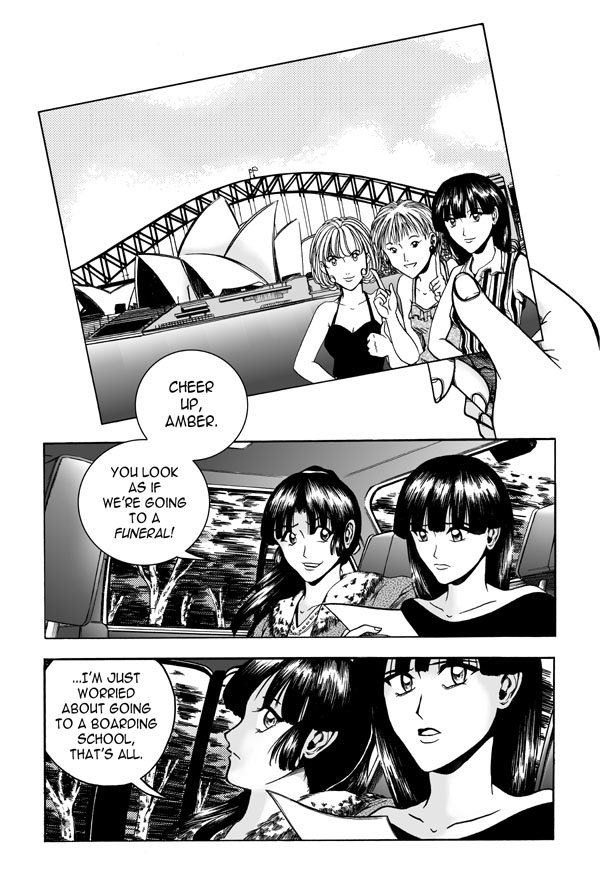- This post is part of a on-going series called “Being a Professional Manga Artist in the West“. The first post is here.
- You can buy my “Queenie Chan: Short Stories 2000-2010” collection as a USD$4.99 PDF (plus EPUB, DRM-free). Get it from Smashwords!
Part 1: Introduction
This section deals with the ten years I spent working as a professional manga-style comic book artist in the west. It’s quite long, since part of my goal is to give an overview in the changes that has happened in the industry over that time. It’s meant to be a documentation of working as a manga-style comic book artist from 2004-2014, and a resource for people considering it was a career path.
I don’t want to discourage people from chasing their dreams, but I also want to honest about my life. I get emails from young aspiring manga artists online all the time, asking questions that are very hard to answer. There are tonnes of resources on drawing comics, but none about getting published as a western manga artist very much. (In fact, there’s always a dearth of information about making a living as a comic book artist, because there few people who can make that claim.)
I hope to give some more insight into that in my posts. Along the way, I also hope to answer some questions I get asked a lot, such as ‘can you make a living as a manga-style comic book artist?’
Part 2: My Publishing History
I suppose I should list the works I’ve had published in the past 10 years. By ‘had published,’ I mean that (a) a publishing house paid an advance for the book, and (b) the book actually ended up on a bookshelf in an actual bookstore. I self-publish on the side (like everyone else), so it’s important to make this distinction. These parts of the posts are meant to talk about the industry, and ‘industry’ typically means ‘publishing houses that pay money to sell your books to readers who buy them.’ Self-publishing will be a separate section in this series.
*****
Here, I give a statistical run-down of my publishing history:
- Number of books published in print: 9 (plus an anthology)
- Number of publishing houses worked for that paid in actual dollars: 5 (TOKYOPOP, Randomhouse Del Rey, Hachette Yen Press, Fairview Press, Harper Collins Voyager)
- Years Active: 2004-2014 (Starting from year of first publishing contract signed)
- Number of editors worked with: 10 (Believe me, the lifespan of editors can be even shorter than that of comic book artists)
- Number of publishers who got replaced during that time: 4 (Publishers are the people who run the individual publishing houses, and they get replaced all the time)
- Number of publishing houses shut down: 1 (I think you all know who this was)
- Number of movies in development: 1 (It’s ‘The Dreaming’ movie. The ‘Odd Thomas’ movie got made and released, folks. I never got to see it. Did anyone reading this see it? How was it?)
- Amount of money made: Probably could have made more working a part-time job in another field.
*****
Anyway, here’s a list of my published works, plus pictures. Also, where you can buy them to make things easier:
Work: The Dreaming v1-3, The Dreaming (Perfect Collection)
Publisher: TOKYOPOP (2005-2010)
Purchase in Print: RightStuf.com
Purchase as E-book: Comixology
Work: In Odd We Trust (2008), Odd is on our Side (2010), House of Odd (2012), Written by Dean Koontz, Fred Van Lente, Landry Q. Walker, Illustrated by me
Publisher: Random House (Del Rey, 2008-2012)
Purchase #1 as E-book: Amazon
Purchase #2 as E-book: Amazon
Purchase #3 as E-book: Amazon
Work: Boy’s Book of Positive Quotations
Publisher: Fairview Press (2009)
Purchase in Print: Amazon
Work: Forget-Me-Not (Yen Plus Anthology)
Publisher: Hachette (Yen Press, July 2009)
Purchase as part of anthology in Print: Lulu
Purchase as part of anthology as E-book: Smashwords
Work: Small Shen, Comics-Prose format, Written by Kylie Chan, Illustrated by me
Publisher: Harper Collins (Voyager, 2012)
Purchase in Print: Fishpond.com
Purchase as E-book: Amazon
*****
Next Monday, I will tackle how I got started in the industry.





